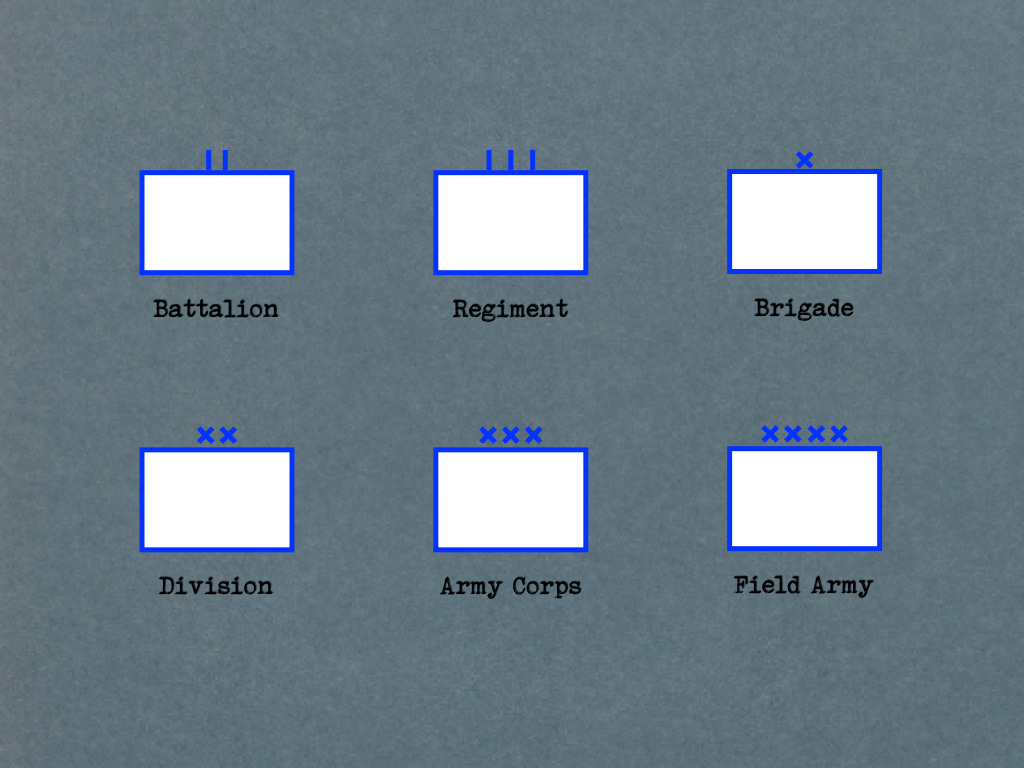The many present-day systems of military map symbols employ quadrilaterals to depict units and formations of a wide variety of sizes. (Diamonds invariably indicate enemy elements. Rectangles and squares usually represent friendly forces, but can also stand in for neutral or even hostile organizations.) Because of this, the only sure way to distinguish a battalion from field army is to look at the size indicator at the top of the box. (This takes the form of one or more dots, bars, or stars.)
The graphical language used in Germany in the first half of the twentieth century took a different approach to the representation of units and formations. Instead of adding modifiers to a single basic shape, it employed a distinct type of flag for each echelon of command.
For Further Reading: The best way to learn more about German tactical symbols is to visit the web page, and read the books, of Dr. Leo Niehorster. (Dr. Niehorster has also developed a systematic “dialect” of the present-day system of military map symbols that is particularly well-suited to the depiction of units of types belonging to the middle years of the twentieth century.)




